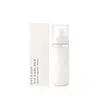What's inside
What's inside
 Key Ingredients
Key Ingredients

 Benefits
Benefits

 Concerns
Concerns

 Ingredients Side-by-side
Ingredients Side-by-side

Water
Skin ConditioningPropylene Glycol
HumectantButylene Glycol
HumectantHamamelis Virginiana Water
AstringentPolyurethane-35
Vp/Va Copolymer
Glycereth-26
HumectantPropanediol
Solvent1,2-Hexanediol
Skin ConditioningNiacinamide
SmoothingGlycyrrhiza Uralensis Root Extract
Skin ConditioningPortulaca Oleracea Flower/Leaf/Stem Extract
AntioxidantPaeonia Suffruticosa Root Extract
Skin ProtectingPaeonia Lactiflora Extract
AstringentAloe Barbadensis Leaf Water
MaskingPanthenol
Skin ConditioningHydrolyzed Vegetable Protein
Skin ConditioningCaprylhydroxamic Acid
Disodium EDTA
Bisabolol
MaskingSuccinic Acid
BufferingResveratrol
AntioxidantPhenoxyethanol
PreservativeZinc PCA
HumectantCaprylyl Glycol
EmollientMethylparaben
PreservativeBiosaccharide Gum-1
HumectantSodium Benzoate
MaskingPotassium Sorbate
PreservativeEthylhexylglycerin
Skin ConditioningWater, Propylene Glycol, Butylene Glycol, Hamamelis Virginiana Water, Polyurethane-35, Vp/Va Copolymer, Glycereth-26, Propanediol, 1,2-Hexanediol, Niacinamide, Glycyrrhiza Uralensis Root Extract, Portulaca Oleracea Flower/Leaf/Stem Extract, Paeonia Suffruticosa Root Extract, Paeonia Lactiflora Extract, Aloe Barbadensis Leaf Water, Panthenol, Hydrolyzed Vegetable Protein, Caprylhydroxamic Acid, Disodium EDTA, Bisabolol, Succinic Acid, Resveratrol, Phenoxyethanol, Zinc PCA, Caprylyl Glycol, Methylparaben, Biosaccharide Gum-1, Sodium Benzoate, Potassium Sorbate, Ethylhexylglycerin
Water
Skin ConditioningPolyurethane-35
Butylene Glycol
HumectantPvp
Emulsion StabilisingSilica
AbrasivePhenoxyethanol
PreservativeChlorphenesin
AntimicrobialPEG-40 Hydrogenated Castor Oil
EmulsifyingVp/Acrylates/Lauryl Methacrylate Copolymer
Caprylyl Glycol
EmollientNiacinamide
SmoothingRosa Rugosa Flower Water
MaskingAloe Barbadensis Leaf Extract
EmollientSodium Hydroxide
BufferingSodium Hyaluronate
HumectantVitis Vinifera Fruit Extract
Skin ConditioningCamellia Sinensis Leaf Extract
AntimicrobialGlycerin
Humectant1,2-Hexanediol
Skin ConditioningHydroxyacetophenone
AntioxidantWater, Polyurethane-35, Butylene Glycol, Pvp, Silica, Phenoxyethanol, Chlorphenesin, PEG-40 Hydrogenated Castor Oil, Vp/Acrylates/Lauryl Methacrylate Copolymer, Caprylyl Glycol, Niacinamide, Rosa Rugosa Flower Water, Aloe Barbadensis Leaf Extract, Sodium Hydroxide, Sodium Hyaluronate, Vitis Vinifera Fruit Extract, Camellia Sinensis Leaf Extract, Glycerin, 1,2-Hexanediol, Hydroxyacetophenone
Ingredients Explained
These ingredients are found in both products.
Ingredients higher up in an ingredient list are typically present in a larger amount.
1,2-Hexanediol is a synthetic liquid and another multi-functional powerhouse.
It is a:
- Humectant, drawing moisture into the skin
- Emollient, helping to soften skin
- Solvent, dispersing and stabilizing formulas
- Preservative booster, enhancing the antimicrobial activity of other preservatives
Butylene Glycol (or BG) is used within cosmetic products for a few different reasons:
Overall, Butylene Glycol is a safe and well-rounded ingredient that works well with other ingredients.
Though this ingredient works well with most skin types, some people with sensitive skin may experience a reaction such as allergic rashes, closed comedones, or itchiness.
Learn more about Butylene GlycolCaprylyl Glycol is a humectant and emollient, meaning it attracts and preserves moisture.
It is a common ingredient in many products, especially those designed to hydrate skin. The primary benefits are retaining moisture, skin softening, and promoting a healthy skin barrier.
Though Caprylyl Glycol is an alcohol derived from fatty acids, it is not the kind that can dry out skin.
This ingredient is also used as a preservative to extend the life of products. It has slight antimicrobial properties.
Learn more about Caprylyl GlycolNiacinamide is a multitasking form of vitamin B3 that strengthens the skin barrier, reduces pores and dark spots, regulates oil, and improves signs of aging.
And the best part? It's gentle and well-tolerated by most skin types, including sensitive and reactive skin.
You might have heard of "niacin flush", or the reddening of skin that causes itchiness. Niacinamide has not been found to cause this.
In very rare cases, some individuals may not be able to tolerate niacinamide at all or experience an allergic reaction to it.
If you are experiencing flaking, irritation, and dryness with this ingredient, be sure to double check all your products as this ingredient can be found in all categories of skincare.
When incorporating niacinamide into your routine, look out for concentration amounts. Typically, 5% niacinamide provides benefits such as fading dark spots. However, if you have sensitive skin, it is better to begin with a smaller concentration.
When you apply niacinamide to your skin, your body converts it into nicotinamide adenine dinucleotide (NAD). NAD is an essential coenzyme that is already found in your cells as "fuel" and powers countless biological processes.
In your skin, NAD helps repair cell damage, produce new healthy cells, support collagen production, strengthen the skin barrier, and fight environmental stressors (like UV and pollution).
Our natural NAD levels start to decline with age, leading to slower skin repair, visible aging, and a weaker skin barrier. By providing your skin niacinamide, you're recharging your skin's NAD levels. This leads to stronger, healthier, and younger looking skin.
Another name for vitamin B3 is nicotinamide. This vitamin is water-soluble and our bodies don't store it. We obtain Vitamin B3 from either food or skincare. Meat, fish, wheat, yeast, and leafy greens contain vitamin B3.
The type of niacinamide used in skincare is synthetically created.
Learn more about NiacinamidePhenoxyethanol is a preservative that has germicide, antimicrobial, and aromatic properties. Studies show that phenoxyethanol can prevent microbial growth. By itself, it has a scent that is similar to that of a rose.
It's often used in formulations along with Caprylyl Glycol to preserve the shelf life of products.
We don't have a description for Polyurethane-35 yet.
Water. It's the most common cosmetic ingredient of all. You'll usually see it at the top of ingredient lists, meaning that it makes up the largest part of the product.
So why is it so popular? Water most often acts as a solvent - this means that it helps dissolve other ingredients into the formulation.
You'll also recognize water as that liquid we all need to stay alive. If you see this, drink a glass of water. Stay hydrated!
Learn more about Water